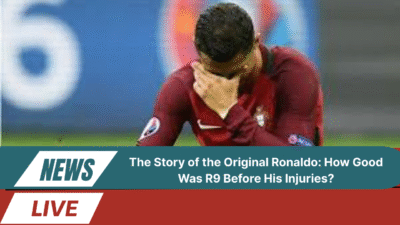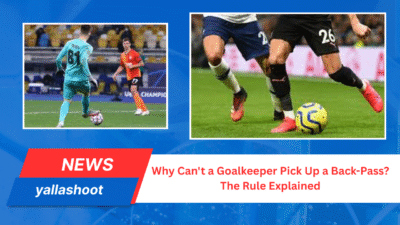How Does a Player’s Release Clause Work, and why does it generate so much debate in modern football? Imagine a world where a superstar can be untouchable, not because of loyalty alone but because a piece of paper in a contract locks in their price. Release clauses have become one of the most fascinating aspects of football contracts, shaping transfers and sometimes even shocking the sporting world.
Football fans often hear about billion-euro release clauses in Spain, record-breaking buyout fees, or dramatic negotiations when clubs refuse to let go of their prized talent. Yet few outside the business truly understand how these clauses operate. Are they simply protective shields for clubs, or can they actually empower players to take control of their careers?
In this article, we’ll explore the mechanics of release clauses, compare them to other transfer clauses, dive into famous examples, and explain why La Liga makes them mandatory. By the end, you’ll not only understand how they function but also why they have become an essential element of modern football economics.

How Does a Player’s Release Clause Work in a Football Contract?
At its core, a release clause is a contractual agreement that sets a fixed transfer fee. If another club meets this amount, the player is free to negotiate with them, and the selling club is legally obliged to accept. This system brings clarity to transfers that might otherwise involve weeks of bargaining.
Why it matters
It guarantees a clear market value for the player.
It prevents selling clubs from blocking transfers unfairly.
It provides players with an escape route when they want to move.
Breaking Down Release Clauses in Simple Terms
1.Definition and Legal Background
A release clause is a legally binding contract term. In Spain, every professional player must have one by law. This protects players’ rights by ensuring they cannot be trapped indefinitely.
2.How Clubs Use Release Clauses in Negotiations
Clubs set release clauses based on strategy:
Young talents: Lower amounts to make future sales easier.
Established stars: Huge amounts to discourage interest.
Squad players: Realistic amounts to balance flexibility and control.
3.Difference Between Buyout Clause and Release Clause
Release clause: Obligates the club to release the player if the fee is met.
Buyout clause: Player pays the fee (usually with funds from the buying club) to end the contract themselves.
Transfer Clauses Explained: The Bigger Picture
Football contracts include many transfer-related clauses, each serving a different purpose.
Examples of common clauses:
Sell-on Clause: Ensures a former club earns a percentage from future transfers.
Performance Clause: Additional payments triggered by goals, appearances, or trophies.
Loyalty Bonus: Rewards players for staying a certain number of seasons.
What makes release clauses unique is that they set a non-negotiable transfer fee, unlike other clauses that depend on future events.
How Release Clauses Work in Real Scenarios
Let’s imagine a real case.
Club A signs a striker with a €100 million release clause.
Club B comes in and offers exactly €100 million.
Club A cannot reject; the striker is now free to discuss terms with Club B.
The final decision rests with the player: accept or stay.
La Liga’s Mandatory Rule
Spain requires every contract to have a release clause. This is why we see numbers like Messi’s €700 million or Neymar’s €222 million make headlines.
Famous Examples
Neymar (2017): PSG activated his €222 million clause from Barcelona — the most expensive deal ever.
Messi (2020): His €700 million clause was so high that no club could realistically pay it.
Advantages and Disadvantages of Release Clauses
1.Advantages for Players
Freedom of movement if undervalued.
Transparency about market worth.
Protection from being trapped in long contracts.
2.Advantages for Clubs
Shield against low bids.
Stronger negotiating position.
Symbol of financial strength when figures are massive.
3.Risks and Downsides
A low clause could see a star leave suddenly.
An excessively high clause may trap a player.
Creates inequality in the squad if clauses differ too widely.
The Role of Buyout Clauses in Transfers
Buyout clauses often function as deterrents rather than realistic fees. For example, Real Madrid and Barcelona have assigned billion-euro clauses to players such as Cristiano Ronaldo and Benzema.
Agents’ Role:
Negotiate for fair numbers that do not undervalue their client.
Protect players from clauses that might harm career flexibility.
Comparing Release Clauses Across Major Leagues
| League | Policy on Clauses | Key Difference |
|---|---|---|
| La Liga (Spain) | Mandatory by law | Every player has one |
| Premier League (England) | Optional, rarely used | Clubs rely on traditional negotiations |
| Bundesliga (Germany) | Common but not compulsory | Usually realistic values |
Spain’s system emphasizes player rights. England and Germany give more power to clubs, leading to less transparency.
Famous Case Studies of Release Clauses
Lionel Messi: €700 million at Barcelona, never activated.
Cristiano Ronaldo: €1 billion at Real Madrid, symbolic but never met.
Antoine Griezmann: €120 million clause, triggered by Barcelona in 2019.
Karim Benzema: €1 billion clause, kept him at Madrid until free transfer.
These stories show how clauses can be either practical tools or symbolic shields.
Case Study Table: Biggest Release Clauses in Football
| Player | Club | Release Clause | Outcome |
|---|---|---|---|
| Lionel Messi | Barcelona | €700 million | Never triggered |
| Neymar Jr. | Barcelona | €222 million | Activated by PSG in 2017 |
| Cristiano Ronaldo | Real Madrid | €1 billion | Never triggered, sold for €100m |
| Antoine Griezmann | Atletico Madrid | €120 million | Activated by Barcelona in 2019 |
| Karim Benzema | Real Madrid | €1 billion | Stayed until free transfer to Al-Ittihad |
FAQs About Release Clauses in Football

What happens if two clubs trigger a release clause at the same time?
The player chooses which offer to accept.
Can a player refuse a transfer even if the clause is met?
Yes, they must still agree personal terms.
Are release clauses always public?
In Spain, yes. In other countries, not necessarily.
Why are release clauses common in Spain but rare elsewhere?
Because Spanish law makes them mandatory, unlike other leagues.
Do youth players also have release clauses?
Yes, though usually with much lower amounts.
Conclusion: The Growing Importance of Release Clauses
The question How Does a Player’s Release Clause Work is central to modern football. It is not just a legal detail but a mechanism that shifts power between clubs, players, and the transfer market.
Neymar’s €222 million transfer proved that even record clauses can be met, while Messi’s €700 million clause showed how clubs can shield their legends. As football grows richer, these clauses will continue to be decisive in shaping careers and rewriting transfer history.
For clubs, they are a safeguard. For players, they are a potential lifeline. For fans, they add drama and suspense. Release clauses are no longer hidden details — they are a defining feature of the modern game.










